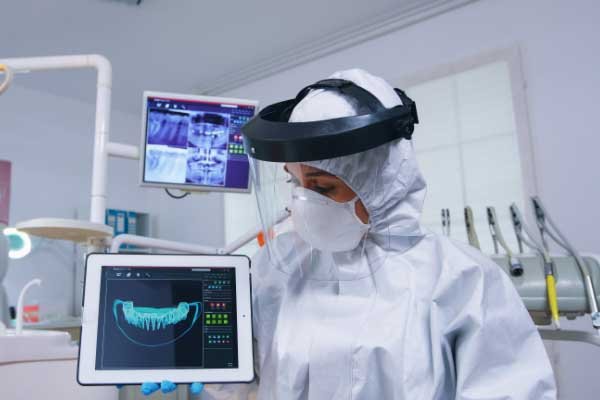
Radiographic imaging is an essential part of diagnosis, documentation and treatment planning at any modern dental practice. Digital x-ray technologies provide numerous advantages over their film predecessors. Digital radiography systems allow clinicians and patients to instantly view of images on a computer, iPad, or operatory TV screen at a higher resolution than film. Digital files can easily be shared with insurance companies or referral partners, and because they can be stored on a hard drive, they are easier to manage and find. Along with these advantages digital x-ray technologies use less radiation than film counterparts, making it safer for patients and clinicians while also provide practices with a greener option as they eliminate the use of photo processing chemicals. Digital imaging goes beyond just adding efficiencies to the dental imaging process because the latest technologies allow clinicians to capture images and use them in ways impossible with film. Cone beam computed tomography systems create highly accurate 3D digital models of the target anatomy, and digital imaging software allows these images to be enhanced for improved diagnostics and greater precision in treatment planning. Digital imaging technologies are changing the dental industry and improving the lives of dental patients.
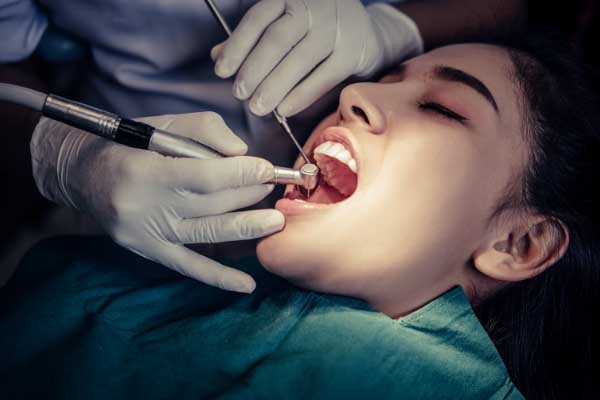
A root canal is a treatment used to repair and save a tooth that is badly
decayed or becomes infected. During a root canal procedure, the nerve and pulp are removed and
the inside of the tooth is cleaned and sealed. Without treatment, the tissue surrounding the
tooth will become infected and abscesses may form.
"Root canal" is the term used to describe the natural cavity within the center of the tooth.
The pulp or pulp chamber is the soft area within the root canal. The tooth's nerve lies within
the root canal.
A tooth's nerve is not vitally important to a tooth's health and function after the tooth has
emerged through the gums. Its only function is sensory -- to provide the sensation of hot or
cold. The presence or absence of a nerve will not affect the day-to-day functioning of the tooth.

Crown and bridge treatment is a long-term method of replacing missing teeth.
A crown is placed on an individual tooth, where there is no sufficient tooth structure remaining
to place a filling.
A bridge is applied when in space where one or more teeth have been lost. The teeth on either
ends are crowned, and are referred to as abutments. The false teeth in a bridge that join the
abutments are termed as pontics. Crowns and bridges are mostly manufactured from superior materials
such as gold, porcelain, or a combination of metal fused to porcelain.
Both appearance and the function are considered when selecting the material that is best for you.
Wht is Crown?
A crown, often called as a cap, is an artificial hollow cover resembling a natural tooth crown
that restores a decayed or damaged tooth to its normal shape and size. It is fabricated out of
metal or ceramic material by special procedure in a dental lab.

What Does a Cosmetic Dentist Do?
A cosmetic dentist is responsible for a variety of procedures — from minor fixes to major surgeries.
Here are a few of the cosmetic procedures they offer.
Teeth Whitening
Teeth whitening is one of the most basic cosmetic dentistry procedures—as well as one of the least
expensive. Over time, teeth can become stained from food, drinks, medications, or other habits like
smoking. Many people turn to teeth whitening to make their smile brighter.
After teeth have been cleaned of plaque, tartar, and other debris, teeth whitening can bleach the
surface of teeth to create a brighter, whiter appearance. While over-the-counter products like toothpaste,
rinses, and whitestrips can offer some results, professional tooth whitening can provide a shade up
to 5 to 8 times lighter.
Dental Veneers
Dental veneers are thin, white shells made from medical-grade porcelain, resin, or ceramic. They’re
custom made for each patient to resemble their natural teeth.
Before attaching the veneers, the dentist removes some enamel from the tooth’s surface to allow
the shells to be bonded realistically to the front of the teeth. Dental veneers can fix a number
of cosmetic issues, including crooked teeth, damaged enamel, and gaps between teeth.
Dental Crowns
A dental crown, also known as a dental cap, fits over a decayed or damaged tooth. These crowns
can keep a weakened tooth from breaking or used cosmetically to cover misshapen or severely discolored teeth.
They can also be used to cover other procedures, like root canals, enamel fillings, dental bridges,
or dental implants.
Inlays and Onlays
Inlays and onlays, also known as indirect fillings, are used when a tooth is too decayed to support
a typical filling. These fillings are created in a dental laboratory and bonded in place by a
cosmetic dentist.
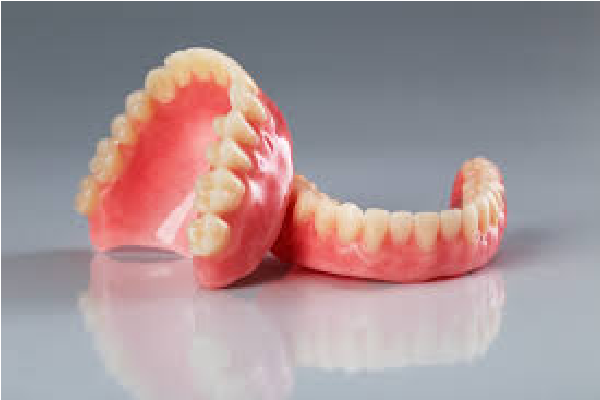
It improves imperfection of bite and enhances the appearance of smile by
correcting the entire dentition which is deteriorated due to several factors.
It is basically a combination of various dental procedures to primarily improve the functionality
of teeth in terms of chewing, talking and biting.

Tooth whitening or tooth bleaching is the process of lightening the color of
human teeth. Whitening is often desirable when teeth become yellowed over time for a number of
reasons, and can be achieved by changing the intrinsic or extrinsic color of the tooth enamel.
The chemical degradation of the chromogens within or on the tooth is termed as bleaching.
Hydrogen peroxide (H2O2) is the active ingredient most commonly used in whitening products and is delivered as either
hydrogen peroxide or carbamide peroxide. Hydrogen peroxide is analogous to carbamide peroxide
as it is released when the stable complex is in contact with water. When it diffuses into the tooth,
hydrogen peroxide acts as an oxidising agent that breaks down to produce unstable free radicals.
In the spaces between the inorganic salts in tooth enamel, these unstable free radicals attach to
organic pigment molecules resulting in small, less heavily pigmented components. Reflecting less
light, these smaller molecules create a "whitening effect". There are different products available
on the market to remove stains. For whitening treatment to be successful, dental professionals
(dental hygienist or dentist) should correctly diagnose the type, intensity and location of the
tooth discolouration. Time exposure and the concentration of the bleaching compound, determines
the tooth whitening endpoint.
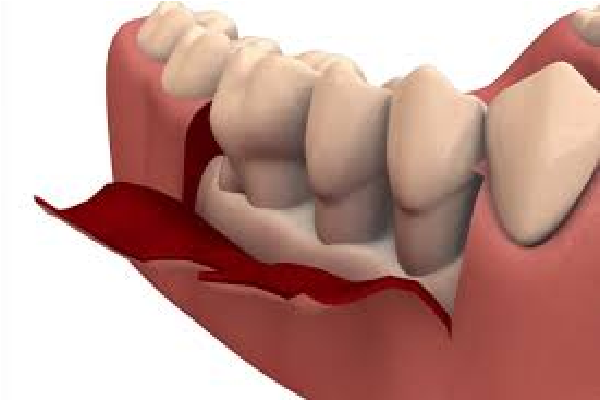
Periodontitis (per-e-o-don-TIE-tis), also called gum disease, is a serious
gum infection that damages the soft tissue and, without treatment, can destroy the bone that
supports your teeth. Periodontitis can cause teeth to loosen or lead to tooth loss.
Periodontitis is common but largely preventable. It's usually the result of poor oral hygiene.
Brushing at least twice a day, flossing daily and getting regular dental checkups can greatly
improve your chances of successful treatment for periodontitis and can also reduce your chance
of developing it.

A dental implant is a "root" device, usually made of titanium, used in
dentistry to support restorations that resemble a tooth or group of teeth to replace missing teeth.
Virtually all dental implants placed today are root-form endosseous implants, i.e., they appear
similar to an actual tooth root (and thus possess a "root-form") and are placed within the bone
(endo- being the Greek prefix for "in" and osseous referring to "bone"). The bone of the jaw accepts
and osseointegrates with the titanium post. Osseointegration refers to the fusion of the implant
surface with the surrounding bone. Dental implants will fuse with bone; however, they lack the
periodontal ligament, so they will feel slightly different from natural teeth during chewing.
Prior to the advent of root-form endosseous implants, most implants were either blade endosseous
implants, in that the shape of the metal piece placed within the bone resembled a flat blade, or
subperiosteal implants, in which a framework was constructed to lie upon and was attached with
screws to the exposed bone of the jaws.
What Are Dental Implants?
Dental implants are replacement tooth roots. Implants provide a strong foundation for fixed
(permanent) or removable replacement teeth that are made to match your natural teeth.
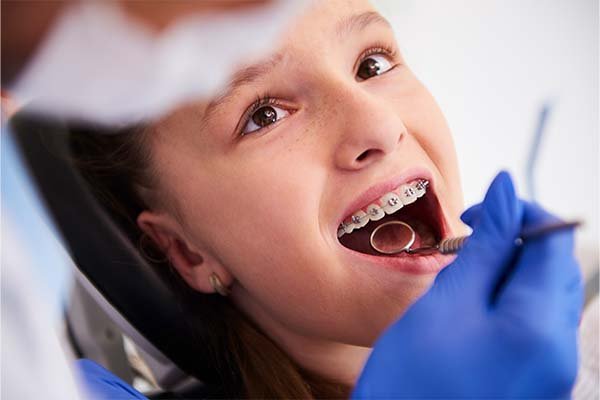
What is orthodontic treatment?
Orthodontic treatment is a way of straightening or moving teeth, to improve the appearance of the
teeth and how they work. It can also help to look after the long-term health of your teeth, gums
and jaw joints, by spreading the biting pressure over all your teeth.
Why should I have orthodontic treatment?
Many people have crowded or crooked teeth. Orthodontic treatment will straighten the teeth or move
them into a better position. This can improve their appearance and the way the teeth bite together,
while also making them easier to clean.
Some people have upper front teeth that stick out and look unsightly. These 'prominent' teeth are
more likely to be damaged, but orthodontic treatment can move them back into line. Or the way the
upper and lower jaws meet can cause teeth to look unsightly and lead to an incorrect bite. Orthodontic
treatment may be able to correct both of these problems.
When the teeth don't meet correctly, this can put strain on the muscles of the jaw, causing jaw
and joint problems and sometimes headaches. Orthodontic treatment can help you to bite more evenly
and reduce the strain.